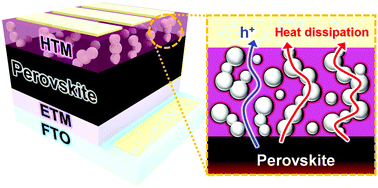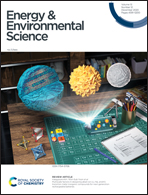Heat dissipation effects on the stability of planar perovskite solar cells†
Abstract
Special attention should be devoted to the stability of the perovskite solar cells, which is a major limitation affecting their commercialization. The stabilities against moisture and light have been substantially improved by optimizing the charge-transporting layer and utilizing encapsulation techniques; however, thermal stability has not yet been secured. Herein, we report a novel approach involving metal oxide nanoparticles infiltrated by hole-transporting materials to enhance device stability. Unlike conventional methods that prevent the thermal decomposition of perovskite, we intend to eliminate the main cause of efficiency drop by dissipating the heat accumulated inside the device. In particular, we observe that metal oxide nanoparticles can effectively reduce the device temperatures and maintain the morphology of hole-transporting materials because of their high thermal conductivity and porous scaffold structure. The experiments demonstrate that our devices without encapsulation retained 91% of their initial efficiency after 31 days at 85 °C and 85% relative humidity, which is the condition to simulate a real operating environment. These results show significant potential for the development of highly stable perovskite solar cells with reasonable efficiency.



 Please wait while we load your content...
Please wait while we load your content...